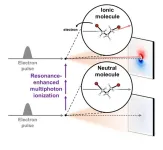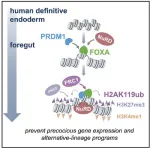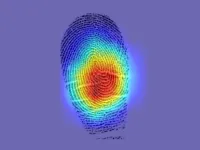Under embargo until Wednesday 10 January 2024, 16:00 UK time / 11:00 US Eastern time
A major international collaboration of 356 scientists led by UCL researchers has found almost identical patterns of tree diversity across the world’s tropical forests.
The study of over one million trees across 1,568 locations, published in Nature, found that just 2.2% of tree species make up 50% of the total number of trees in tropical forests across Africa, the Amazon, and Southeast Asia. Each continent consists of the same proportion of a few common species and many rare species.
While tropical forests are famous for their diversity, this is the first time that scientists have studied the commonest trees in the world’s tropical forests.
The scientists estimate that just 1,053 species account for half of the planet’s 800 billion tropical forest trees. The other half are comprised of 46,000 tree species. The number of rare species is extreme, with the rarest 39,500 species accounting for just 10% of trees.
Lead author Dr Declan Cooper (UCL Geography and UCL Centre for Biodiversity and Environment Research) said: “Our findings have profound implications for understanding tropical forests. If we focus on understanding the commonest tree species, we can probably predict how the whole forest will respond to today’s rapid environmental changes. This is especially important because tropical forests contain a tremendous amount of stored carbon, and are a globally important carbon sink.”
He continued: “Identifying the prevalence of the most common species gives scientists a new way of looking at tropical forests. Tracking these common species may provide a new way to characterise these forests and in the future possibly gauge a forest’s health more easily.”
The researchers found strikingly similar patterns in the proportion of tree species that are common, at close to 2.2%, despite the tropical forests of the Amazon, Africa and Southeast Asia each having a unique history and differing contemporary environments.
The Amazon consists of a large region of connected forest, while Southeast Asia is a region of mostly disconnected islands. People only arrived in the Amazon around 20,000 years ago, but people have been living in African and Southeast Asian forests for more than twice that length of time. In terms of the contemporary environment, African forests experience a drier and cooler climate than the other two tropical forest regions.
Given these striking differences, the near-identical patterns of tree diversity suggests that a fundamental mechanism may govern the assembly of tree communities across all the world’s tropical forests. The researchers are not yet able to say what that mechanism might be and it will focus future work on identifying it.
The estimates of common species derive from statistical analyses, which does not provide the names of the common trees. To overcome this, the scientists used a technique known as resampling to estimate which are the most likely names of the common species. Their list of 1,119 tree species names, the first list of common species of the world’s tropical forests, will allow researchers to focus their efforts on understanding the ecology of these species, which in turn can give scientists a short-cut to understand the whole forest.
See table below for a list of the most common tropical tree species.
Senior author, Professor Simon Lewis (UCL Geography and University of Leeds) said: “We wanted to look at tropical forests in a new way. Focusing on a few hundred common tree species on each continent, rather than the many thousands of species that we know almost nothing about, can open new ways to understand these precious forests. This focus on the commonest species should not take away from the importance of rare species. Rare species need special attention to protect them, but quick and important gains in knowledge will come from a scientific focus on the commonest tree species.”
The researchers assembled forest inventory data from intact tropical forests that hadn’t been affected by logging or fire. In each of 1,568 locations, teams identified and recorded every tree with a trunk greater than 10 centimetres in diameter, in a patch of forest, usually one hectare, which is a square of forest measuring 100 metres on each side.
Professor Lewis has been collecting and collating this data for 20 years. The effort is a collaboration of the largest plot networks across the Amazon (Amazon Tree Diversity Network; RAINFOR), Africa (African Tropical Rainforest Observatory Network, AfriTRON; Central African Plot Network), and Southeast Asia (Slik Diversity Network; T-FORCES), brought together for the first time for the published analysis.
This collaboration across hundreds of researchers, field assistants, and local communities resulted in a total of 1,003,805 trees sampled, which included 8,493 tree species, across 2,048 hectares, equivalent to almost eight square miles of forest. The teams inventoried 1,097 plots in the Amazon totalling 1,434 hectares, 368 plots in Africa totalling 450 hectares, and 103 plots in Southeast Asia totalling 164 hectares.
This research was supported by the Natural Environmental Research Council.
Most common tropical forest tree species:
Continent
Scientific name
Local Names
Africa
Gilbertiodendron dewevrei
Limbali, otabo, agbabu, ekpagoi-eze
Africa
Greenwayodendron suaveolens
Africa Teak, atorewa, ẹ́wáé, nchua, eleku, agudugbu
Africa
Anonidium mannii
Junglesop, imido, asumpa, ọ̀ghẹ́dẹ́gbó
Africa
Petersianthus macrocarpus
Stinkwood tree; soap tree abalé, tun-tue, pèh, ésiv, kpa
Africa
Santiria trimera
adjouaba à racines aériennes, damzin, an-thanjka, kafe, poh, gólógóló.
Africa
Strombosia pustulata
itako, afina, poé, mba esogo
Africa
Tabernaemontana crassa
Adam's-apple flower, k-poŋgbo, opuko, patié patié, pete-pete
Africa
Staudtia kamerunensis
Niové, ichala, ọbara-okisi, íyìp ókōyò
Africa
Strombosiopsis tetrandra
Bwika, Mbazoo
Africa
Dichostemma glaucescens
Mangamba, Mongamba
Amazonia
Oenocarpus bacaba
Bacaba, Turu Palm
Amazonia
Eschweilera coriacea
matamatá
Amazonia
Iriartea deltoidea
bombona
Amazonia
Pentaclethra macroloba
pracaxi
Amazonia
Euterpe oleracea
açaí palm
Amazonia
Astrocaryum murumuru
murumuru
Amazonia
Geissospermum sericeum
quina-quina branca, pao pereira
Amazonia
Eperua falcata
bootlace tree, bi udu, wapa
Amazonia
Euterpe precatoria
mountain cabbage; açai, açaizeiro, açaí-do-amazonas, palmiche, wassaï, huasaí, manaca
Amazonia
Rinorea racemosa
branquinha
Southeast Asia
Shorea multiflora
yellow meranti
Southeast Asia
Tristaniopsis merguensis
Hill Tristania
Southeast Asia
Cotylelobium melanoxylon
Resak hitam; Khiam khaao; Resak tempurong; Giam tembaga
Southeast Asia
Dehaasia caesia
Magasil, Medang
Southeast Asia
Streblus ilicifolius
Jungle Holly, Merlimau
Southeast Asia
Shorea xanthophylla
seraya kuning barun
Southeast Asia
Shorea parvifolia
light red meranti, white lauan
Southeast Asia
Elateriospermum tapos
Perah, Buah Perah, Pogoh Nut, Tapos
Southeast Asia
Ixonanthes reticulata
Pagar Anak, Ten Men Tree, Inggir Burong, Nyiran Burong
Southeast Asia
Gluta oba
Rengas
Notes to Editors
For more information or to speak to the researchers involved, please contact Michael Lucibella, UCL Media Relations. T: +44 (0)75 3941 0389, E: m.lucibella@ucl.ac.uk
Declan Cooper, Simon Lewis, et. al, ‘Consistent patterns of common species across tropical tree communities’ will be published in Nature on Wednesday 10 January 2024, 16:00 UK time, 11:00 US Eastern Time, and is under a strict embargo until this time.
The DOI for this paper will be 10.1038/s41586-023-06820-z
Upon publication, the paper will be available at: https://www.nature.com/articles/s41586-023-06820-z
Additional material
Declan Cooper’s academic profile
Professor Simon Lewis’ academic profile
UCL Geography
UCL Faculty of Social & Historical Sciences
About UCL – London’s Global University
UCL is a diverse global community of world-class academics, students, industry links, external partners, and alumni. Our powerful collective of individuals and institutions work together to explore new possibilities.
Since 1826, we have championed independent thought by attracting and nurturing the world's best minds. Our community of more than 50,000 students from 150 countries and over 16,000 staff pursues academic excellence, breaks boundaries and makes a positive impact on real world problems.
The Times and Sunday Times University of the Year 2024, we are consistently ranked among the top 10 universities in the world and are one of only a handful of institutions rated as having the strongest academic reputation and the broadest research impact.
We have a progressive and integrated approach to our teaching and research – championing innovation, creativity and cross-disciplinary working. We teach our students how to think, not what to think, and see them as partners, collaborators and contributors.
For almost 200 years, we are proud to have opened higher education to students from a wide range of backgrounds and to change the way we create and share knowledge.
We were the first in England to welcome women to university education and that courageous attitude and disruptive spirit is still alive today. We are UCL.
www.ucl.ac.uk | Follow @uclnews on Twitter | Read news at www.ucl.ac.uk/news/ | Listen to UCL podcasts on SoundCloud | View images on Flickr | Find out what’s on at UCL Minds
END






